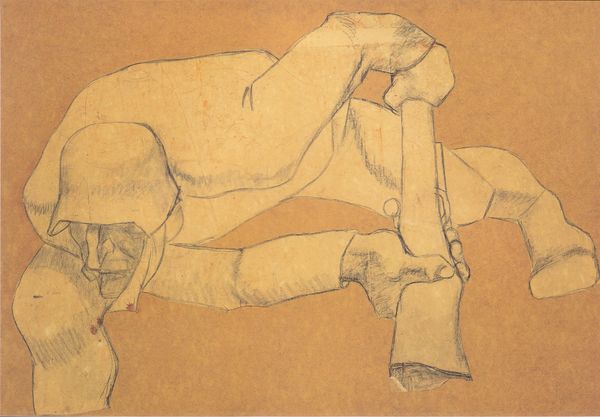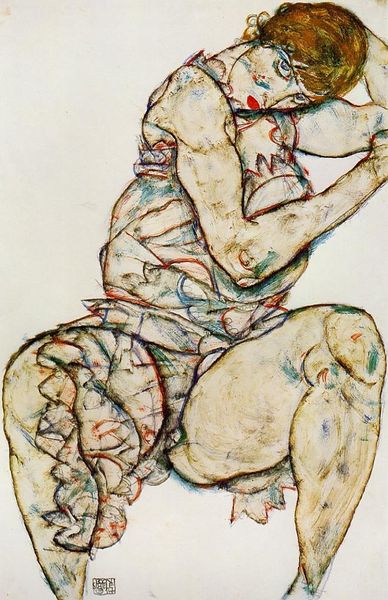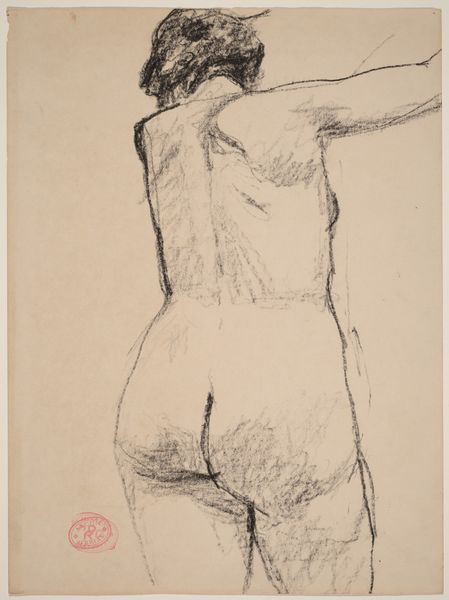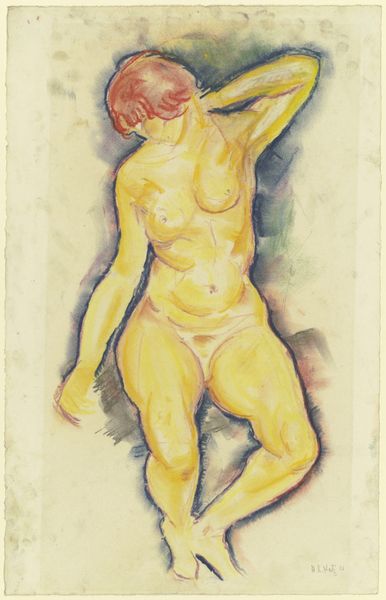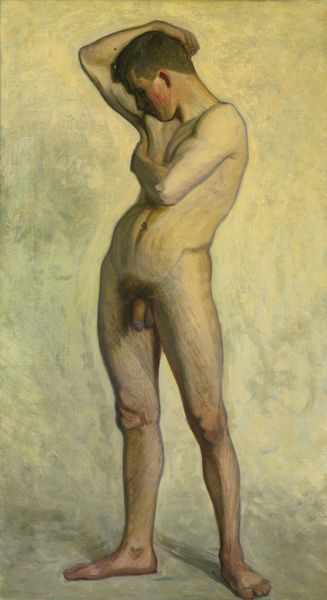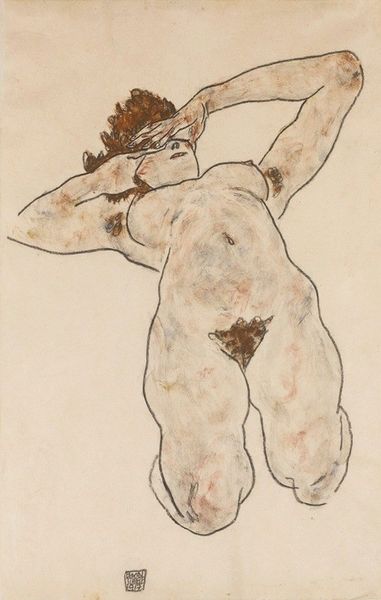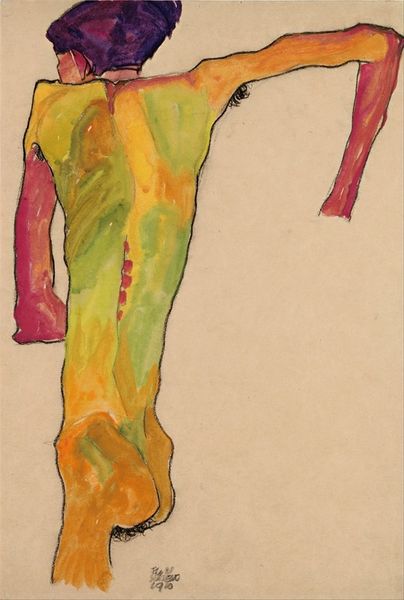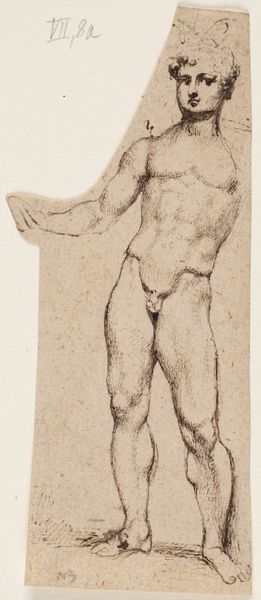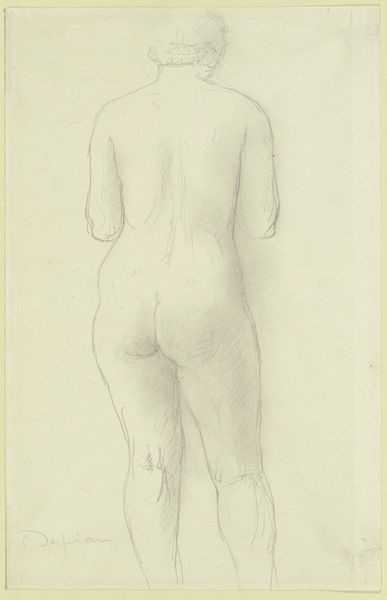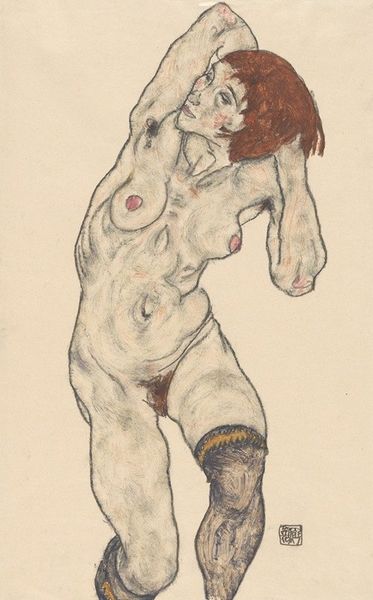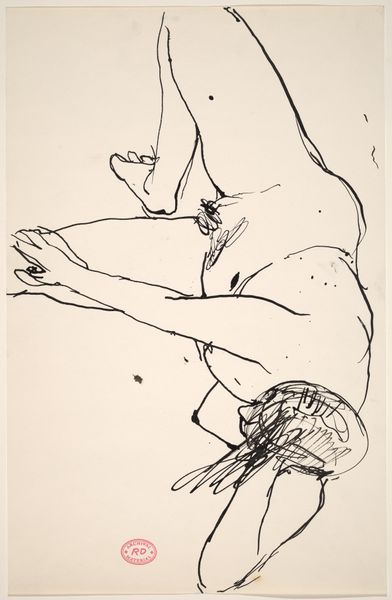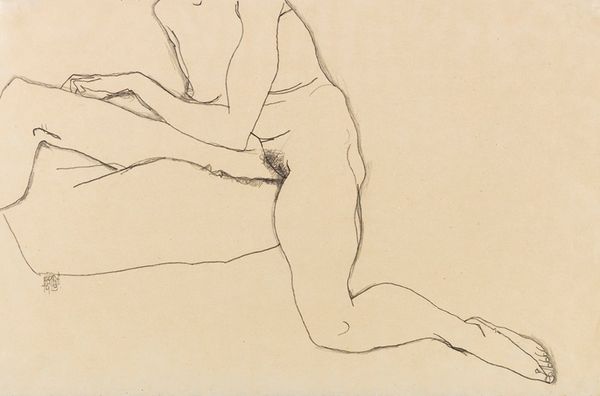
drawing, coloured-pencil
#
drawing
#
coloured-pencil
#
figuration
#
female-nude
#
coloured pencil
#
expressionism
#
nude
Dimensions: 47.8 x 31.7 cm
Copyright: Public domain
Curator: This is "Kneeling Female Nude, Back View," rendered in 1915 by Egon Schiele using colored pencil. The drawing depicts a nude woman from the rear. One detail that might strike you is the incongruity of her wearing a heeled shoe. Editor: There’s a startling vulnerability here, despite the twisted pose, maybe even accentuated by it. I mean, consider the societal restraints on female visibility then versus now. She is turned away, submissive, yet defiant. There is strength in the drawing too. Curator: Indeed. The figure seems to emerge from the tradition of the female nude. Note how the body is defined with harsh, almost violently scribbled marks in greens and reds and yellows; she is colored, almost sick, to the sight, maybe? Schiele uses color for expression here. This could represent the collective anxiety around femininity, heightened by wartime fragility, with all the shifting identities for women it implied at that moment. Editor: Yes, the psychological underpinnings are intense. Those intense marks you note, those contours—they highlight a struggle, a sort of painful self-awareness perhaps. I’d read that lone shoe as more than just incongruous: it anchors her to a reality, a duty or social position from which the nude otherwise pulls her away. I’d add the colored pencil work to her exposed back creates almost symbolic lacerations across the planes of her flesh, reminiscent of Egon’s tormented psychology in that historical moment. Curator: It also reminds us of his bold subversion of conventional aesthetic expectations for nude portraiture in this specific time, a period of social and political unease. Schiele’s use of the nude reflects broader Expressionist trends that aimed to unsettle viewers rather than soothe them, I would posit. His color usage creates new meanings that push the work away from its subject as an exercise in visual accuracy. Editor: Precisely! Through Schiele's gaze, we witness not merely the depiction of a woman, but a visual reckoning with societal unease and gendered expectations as Europe barreled into total war. It's discomfort embodied. It becomes this powerful statement. Curator: Looking closely at the lines and hues, it speaks, ultimately, of something more complex and challenging in that historical moment. Editor: Right. Art historical lenses illuminate the subject of Schiele’s psychological experience. It leaves one wrestling with their own perceptions of beauty and humanity.
Comments
No comments
Be the first to comment and join the conversation on the ultimate creative platform.

